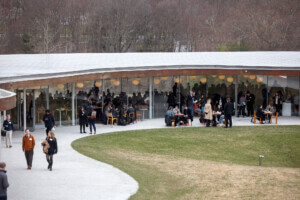The ongoing novel coronavirus pandemic is continuing to wreak havoc on the architecture and construction markets (see the catastrophic May Architecture Billings Index numbers for proof), even as construction jobs return in states that have eased restrictions on non-essential projects.
Case in point: Construction costs have reportedly fallen for the first time since 2010, but according to Associated Builders and Contractors (ABC), a national construction industry trade association, raw material costs rose by 2.2 percent in June. Non-residential material inputs rose by 2.3 percent.
The increase in material costs follow (for a second consecutive month, costs were up by 0.8 percent in May) stem in part from the ongoing battering of the global supply chain by coronavirus-related disruptions, something predicted all the way back in March, when the flow of both raw materials and finished goods already began to slow.
“For many contractors, lack of demand for their services has emerged as the leading source of concern due to the COVID-19 pandemic, followed closely behind by a fear of inflation and a potential increase in materials prices,” said ABC chief economist Anirban Basu in a statement. “June’s PPI [U.S. Bureau of Labor Statistics’ Producer Price Index] data indicate that they are right to be concerned.”
Moreover, Basu suggested that, with no end in sight to the pandemic and international tensions running hot, material costs will continue to rise for the foreseeable future. The biggest driver of the overall increase was the cost of energy, as the price of crude petroleum rose 71.9 percent in June; material costs themselves didn’t move too much in that same time, apart from softwood lumber, the price of which rose 11 percent. It’s important to place these numbers in context, however. Material costs are on the whole 3.4 percent lower than they were in June of 2019, most likely due to the near-simultaneous closures of construction sites around the world.
At the same time, the Turner Building Cost Index, which tracks costs in the non-residential U.S. construction market, declined for the first time in ten years. The index dropped by 1.01 percent from the first quarter of 2020, falling to 1177, driven in part by a glut of construction workers allowed back on the job, combined with a lack of demand.
“Trade contractor competition has increased in many areas,” said Attilio Rivetti, a Turner vice president who compiles the Cost Index, “as they work to secure backlog due to uncertainty they have about future opportunities. We expect the third quarter will serve to more clearly define the fluctuation of escalation of cost in the construction industry.”
Contractors will likely feel their profits pinched for some time, especially if material costs rebound to pre-COVID levels and demand remains flat.











